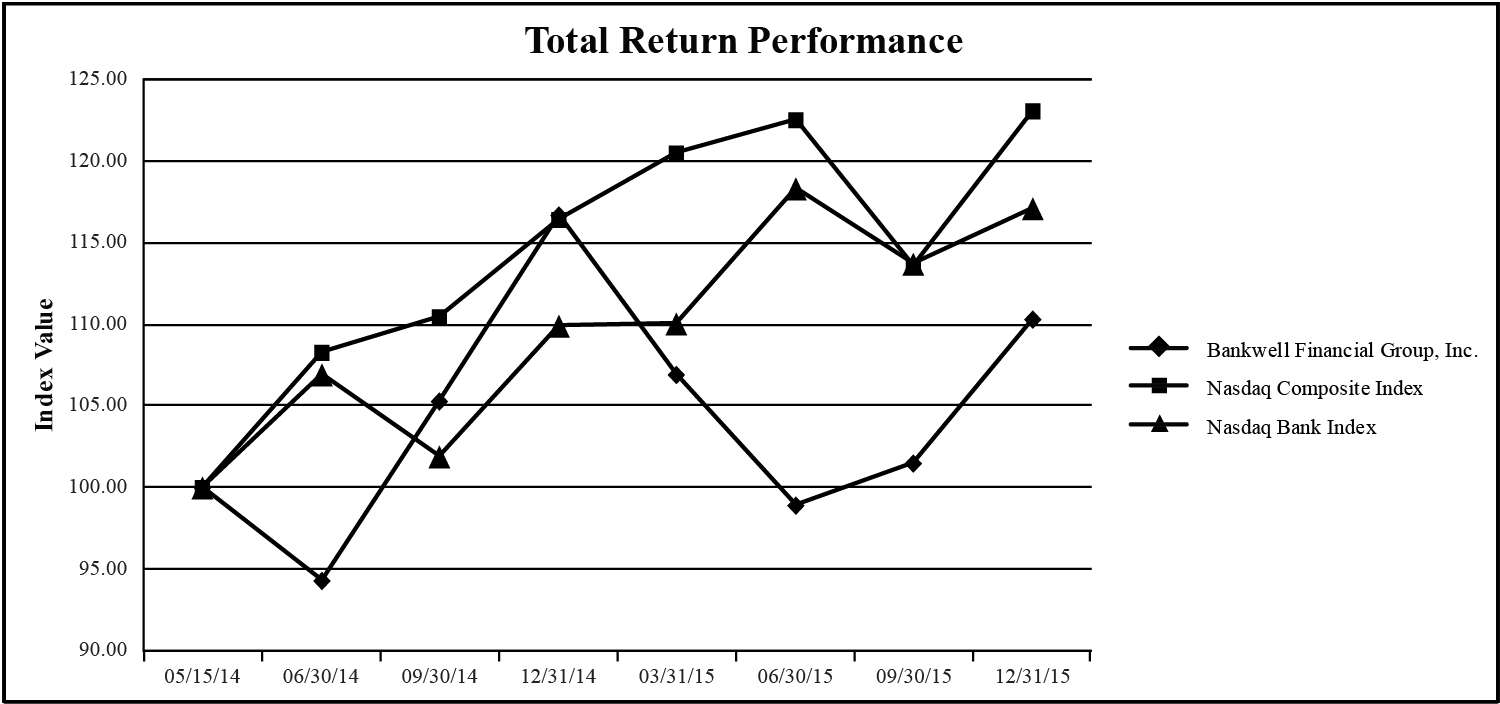health insurance, benefit plans and payroll taxes. Salaries and employee benefits increased by $2.5 million, or 19%, for the year ended December 31, 2015 compared to the year ended December 31, 2014, largely reflecting a full year of salary expense recognized from the former Quinnipiac employees who had joined the Bank in the fourth quarter of 2014, key staffing additions, increases in stock-based compensation expense and higher incentive accruals. Average full time equivalent employees totaled 127 at December 31, 2015 and 110 at December 31, 2014.
Occupancy and equipment. Rent, depreciation and maintenance costs comprise the majority of occupancy and equipment expenses, which increased by $919 thousand, or 21%, for the year ended December 31, 2015, compared to the year ended December 31, 2014. The increase primarily related to depreciation associated with the properties acquired from The Quinnipiac Bank, depreciation on leasehold improvements from our Norwalk branch that opened in the first quarter of 2015 and higher rent expense due mainly to the Norwalk Branch.
Professional services. Professional services include legal, audit and professional fees paid to external parties. For the year ended December 31, 2015 professional services increased by $253 thousand, or 21%, compared to the year ended December 31, 2014. The increase in the 2015 expense is primarily driven by increased internal audit fees.
Marketing. Marketing expenses for the years ended December 31, 2015 and 2014 totaled $985 thousand and $674 thousand, respectively. The increase of $311 thousand, or 46%, reflects costs associated with increased advertising.
FDIC insurance. We are subject to risked-based assessment fees by the FDIC for deposit insurance. For the years ended December 31, 2015 and 2014, FDIC insurance expense was $672 thousand and $488 thousand, respectively. The increase in FDIC insurance expense is driven by increased assessments as a result of increases in our asset base and deposits.
Amortization of intangibles. Amortization of intangibles for the years ended December 31, 2015 and 2014 totaled $196 thousand and $133 thousand, respectively. The increase in amortization of intangibles largely reflects amortization of the core deposit intangible recorded as a result of the Quinnipiac acquisition.
Merger and acquisition related expenses. Merger and acquisition expenses for the years ended December 31, 2015 and 2014 totaled $2 thousand and $1.8 million, respectively. The decrease of $1.8 million reflects legal, consulting, system conversion, severance and marketing expenses incurred as a result of the Quinnipiac acquisition in 2014.
Other expenses. Other expenses for the years ended December 31, 2015 and 2014 totaled $2.2 million and $1.6 million, respectively. The increase of $559 thousand reflects increases in operating expenses and insurance.
Year ended December 31, 2014 compared to year ended December 31, 2013
Noninterest expense was $25.8 million for the year ended December 31, 2014, compared to $22.1 million for the year ended December 31, 2013. The increase of $3.7 million, or 17%, largely reflects higher salaries and employee benefits, reflecting staffing additions and higher incentive accruals and higher merger and acquisition related expenses, attributable to the acquisition of Quinnipiac Bank and Trust Company.
Salaries and employee benefits. Salaries and employee benefit costs are the largest component of noninterest expense and include employee payroll expense, equity and non-equity incentive compensation, health insurance, benefit plans and payroll taxes. Salaries and employee benefits increased by $2.0 million, or 17%, for the year ended December 31, 2014 compared to the year ended December 31, 2013, largely reflecting higher staffing levels and incentive accruals. Staffing increased to 123 full time employees at December 31, 2014 from 106 full time employees at December 31, 2013.
Occupancy and equipment. Rent, depreciation and maintenance costs comprise the majority of occupancy and equipment expenses, which increased by $1.0 million, or 29%, for the year ended December 31, 2014, compared to the year ended December 31, 2013. The increase primarily related to costs associated with the two branches added as a result of the Quinnipiac Bank acquisition and investments related to technology and other equipment.
